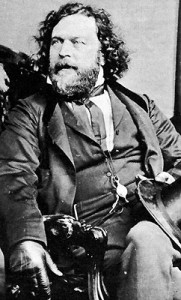Today, when someone says “I read The Times,” they could be referring to any number of publications: The New York Times, the Los Angeles Times, The Seattle Times, The Daily times – the list goes on and on including titles within the US as well as many international titles. However, “The Times” technically refers the original: The London Times.
The Times originally began in 1785 under the name The Daily Universal Register, but took the name it is famously known for on January 1 1788. When it began, little did publisher John Walter know that his publication was soon to become the most influential newspaper in the first half of the 19th century, whose name would be lent to numerous papers around the world.
The Times established its credibility through contributions from London’s elite. It was the first newspaper to be printed on the steam driven cylinder press invented and patented in London by the German inventor, Friedrich Koenig. Not only was it the first broadside to be printed in such a fashion, but the way the words were printed established the first legacy of the paper: The Times New Roman typeface.
The influence of The London Times runs deeper however than just the name and the creation of today’s standard font. The most notable contribution of The Times was the use of war correspondents.
War correspondents are journalists sent into the field to cover stories firsthand from a war zone. During the Crimean War, The Times essentially created the first modern war correspondent when they made a bold move and sent William Howard Russell into the field. With his coverage, the public could finally read the reality of warfare. With this, an the edge of journalism was widely expanded, and war correspondents became a crucial part to the spread of news and survival of news outlets.
The legacy of The Times is clearly seen in the replication of its name among later publications, but is really felt in the field of journalism by its use of war correspondents to cover news in a new way that changed the way news was exchanged with the public.
After seeing the stories The Times was able to gather through the work of correspondents such as Russell, other publishers began to recruit and send out their own war correspondents. The establishment of this facet of journalism would fuel the media war between Hearst and Pulitzer in the states, heighten public interest in war, and has been attributed to the heightened intensity in the wars of the late 19th and 20th centuries.



Leave a response